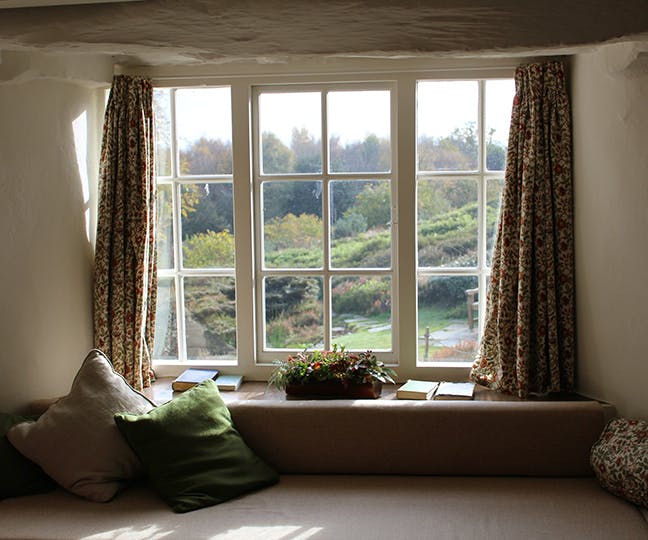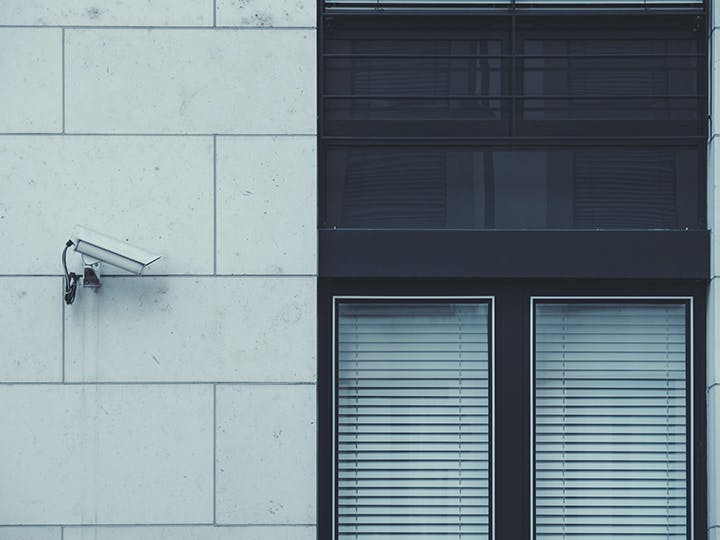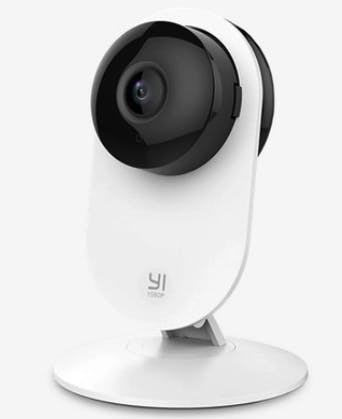
Did you know that windows are the second most common entry point to a home? Second only to doors, windows are an easily accessible entrance to your space. A determined intruder can force a lock, break the glass, and shimmy inside. Many home security products are geared toward protecting your home’s: doors, dead bolts, entryway security cameras, motion detection lights, and doorbell cameras. Safeguarding your windows is just as important. One excellent way to protect your windows is to use a window camera–this camera can monitor movement around your home and keep a record of suspicious activity taking place on your property. A window camera can also record an intruder’s face if they decide to try and enter your home through the window.

What Should You Look for In a Window Camera?
Make sure you buy a window camera that comes with capabilities you value. Look for motion detection, weather resistance, storage capability, and app compatibility.
A quick Google search for “window camera” will show you that there are thousands of devices on the market from countless companies for you to purchase. With so many options, how can you make sure that you pick the best camera? Let’s take a look at some of the features that make a window camera stand out against the competition to help you answer that question.
Motion Detection
Motion-activated cameras are an efficient piece of home security technology. While some cameras constantly capture footage, motion-activated cameras monitor their surroundings but do not capture a recording unless they detect movement. This feature means that you save storage space and have less footage to sort through if you ever want to look back on your camera’s recordings.
Think about it: if someone broke into your home through the window while you were at work, you wouldn’t want to have to sort through hours of stagnant footage to find the moment when the intruder arrived at your home. A motion-activated camera would begin recording when it detected movement, meaning that you would have much less footage to comb through, saving you precious time.
Storage
Pay attention to how your window camera saves video clips. Does it require you to save everything to a micro SD card? Can you save footage to the Cloud? Is some Cloud storage space included with your camera, or do you have to pay for any space that you wish to use? Our motion-activated security camera, for example, allows users to keep 7 days’ worth of footage in the Cloud for free. Users can save additional clips to a local SD card or can purchase a subscription to save even more footage to the Cloud.
Whatever method of video storage works best for you, make sure that you can reliably access the footage that your camera captures. You don’t want to have to worry about recovering footage when you need it most.

Mobile App
You can operate today’s world from the palm of your hand. With the click of a few buttons you can check the weather in any part of the world, read the news, fill your house with music, and talk to someone on the other side of the globe. Shouldn’t your window camera let you monitor it from your phone, apple, or android device too?
A window camera that comes with a mobile app is a window camera that you want. With a mobile app, your camera will also be able to send you notifications if there is suspicious movement taking place on your property. You will be able to see what your window camera sees wherever you are and can notify the police if something is wrong.
Weather Resistance
If you will be using your window camera outside, you have to have a camera that can withstand the elements. Depending on where you live, your outdoor window camera may come in contact with rain, snow, and intense heat. You want a camera that can hold up against inclement weather without a decline in performance.
And indoor cameras need to be resistant to the weather, too. An indoor camera that is placed extremely close to a glass window pane will experience some flux in temperature as the seasons change. Windows today are insulated so the weather outside will typically have a minimal effect on the inside of a building, but insulation weakens over time. A window that has old insulation can experience more drastic temperature changes and can even collect condensation inside. For these reasons, it may be a good idea to pick an indoor window camera that is weather resistant but if your home is built how it should then you shouldn’t have to worry about the weather harming your indoor camera(s)
Wireless or Wired
Do you want a window camera that is wireless or one that is wired? More and more home security technology today is wireless, but you can find both types of window cameras. Wireless cameras are easier to install and make less clutter inside of your home. Some also work independently of your home’s power, meaning that a wireless window camera will continue to capture footage if your power were cut or if you were to experience a power outage.

What Types of Window Cameras Are There?
Window cameras can be placed indoors and outdoors. They use infrared technology and pixel monitoring to detect movement on your property.
When picking your window camera, you will need to decide if you want to place the device inside or outside. You will also need to determine what type of technology you want your camera to use. Let’s take a look at the benefits and features of indoor versus outdoor window cameras and the perks of two of the different types of cameras you can purchase: infrared security camera window cameras and pixel detection window cameras. Whether you install your window cameras inside or outside, the technology that powers the camera is the same.
Outdoor Window Cameras
Outdoor security cameras are typically placed above windows to provide an aerial view from the window’s perspective. This placement provides the best angle for a wide view. These devices can be placed on a window mount so that they extend over the window. Window cameras placed on the outside of your home can often capture a clearer picture than indoor window cameras can.
Indoor Window Cameras
Indoor window cameras should be placed as close to the window they are monitoring as possible. A camera looking through a window runs the risk of producing a less clear image, and if you are hoping to use your camera for facial recognition or other fine details you want the footage it captures to be as crystal clear as possible.

Infrared Security Camera
Infrared technology is one of the most popular methods of camera monitoring today. Infrared cameras are designed to detect ir light energy (also known as heat energy). Window cameras that utilize infrared technology will begin to capture footage of their surroundings whenever a sudden change in temperature within its field of vision occurs. These cameras are excellent for detecting body heat, making them an invaluable asset for catching intruders as soon as they approach your home.
Infrared technology is not a good choice for an indoor window camera. Most glass windows in today’s homes are insulated. Windows are designed to block heat transmission so that homes can efficiently maintain a stable indoor temperature regardless of the temperature outside is scalding or freezing. This makes detecting heat on the other side of the window extremely ineffective. Infrared cameras use infrared illuminators to assist them in capturing footage in the dark. These illuminators are highly reflective, meaning that light will bounce back from the window into the camera lens. This reflection will wash out images, leaving a window glare that washes out footage, sometimes rendering it nearly useless.
If you still want to use an indoor infrared window camera, look for a camera that allows you to turn off the infrared illumination and any other automated external lights. You should be able to control this setting from an app on your phone, so there is little effort required. You can further enhance the footage that your camera will capture by illuminating its field of view from the outside. Setting up automatic lights outside of your windows is an excellent example of how to do this.
Pixel Monitoring Cameras
You can also purchase window cameras that determine if movement has taken place by comparing pixels from image to image captured of its environment. These cameras begin recording footage as soon as they detect a dramatic enough change in lighting from one image to the next. This type of window camera is effective in both indoor and outdoor settings. In indoor placement, it is best to position the camera lens as close to the window as possible. The closer to the glass, the less potential for glare and distortion from outside light reflecting off of the window.
How Can I Conceal a Window Camera?
Try concealing your window camera in a potted plant or with a camouflage skin covering.
Your options for concealing a window camera depend on whether it is inside or outside. If you have positioned your device outdoors, then it is possible to hide a camera inside of a light fixture (preferably one that does not work so that the light doesn’t cause a glare in the camera’s footage) or you can conceal it with a camouflaged skin that blends your camera with its surrounding environment. You can also place your camera high above the window that it is monitoring where it will be out of sight and out of reach. You can also try to strategically conceal a window camera in nearby plants.
Concealing your indoor window camera can be a bit trickier. Since you want the camera’s lens to be as close to the window glass as possible to reduce glare and increase image clarity, you can try to conceal a camera among a display or within the foliage of a plant on your windowsill. You can place your camera on a suction cup window mount so that it stays still as it blends in with its surroundings.
